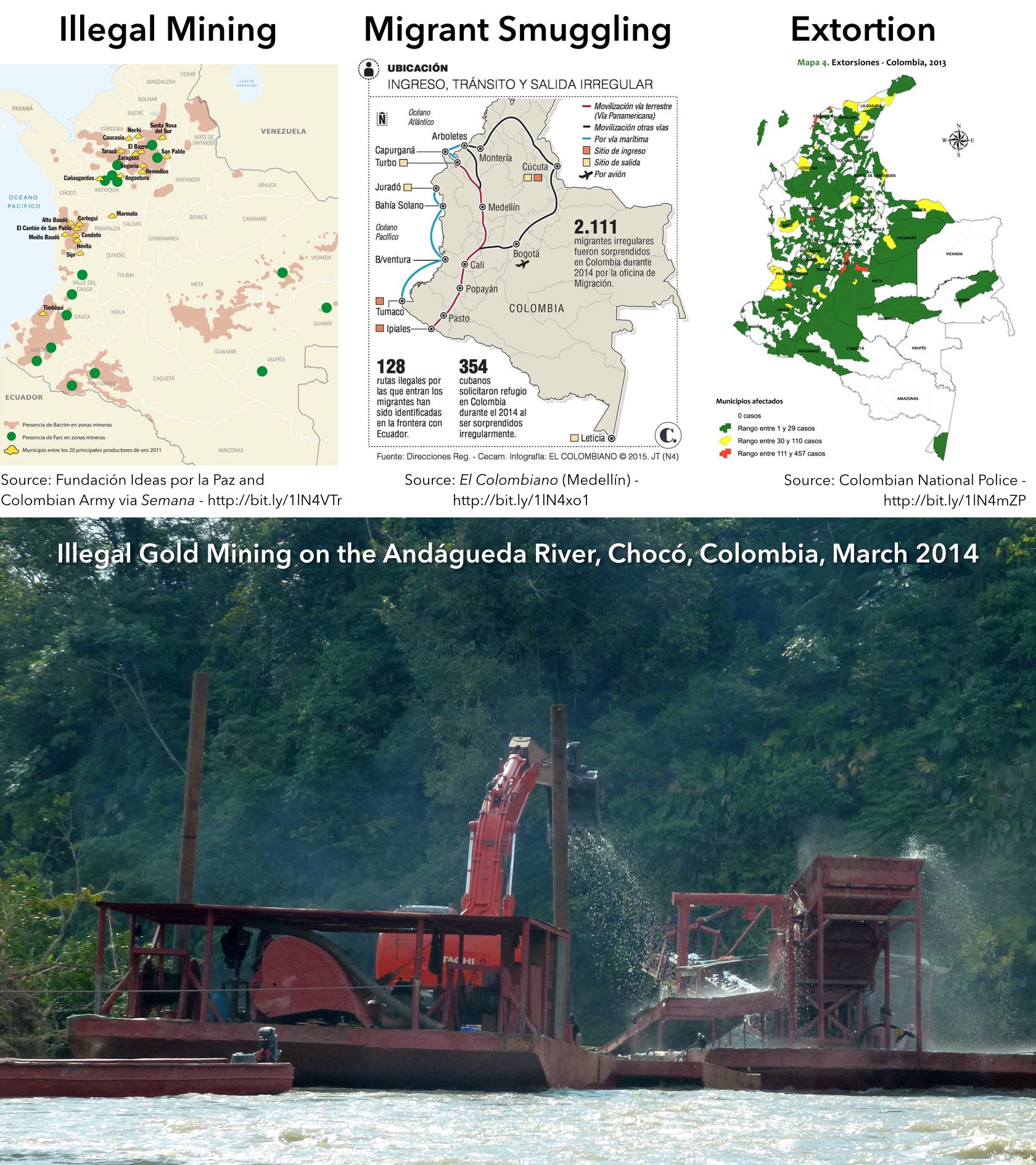Illicit Economies
Though drug trafficking gets most of the attention, “criminal mining has been becoming the main source of financing for many of the activities of terrorist groups, criminal bands, and organized crime in general,” then-Defense Minister Juan Carlos Pinzón said in May 2015. Guerrillas and other violent groups have turned increasingly to the mining of precious metals (gold, platinum, tungsten, coltan) to fund themselves. During the commodities boom of the late 2000s and early 2010s, illegal mining even served as a sort of “alternative development” program, as coca cultivation declined in areas where organized crime and armed groups had turned to precious metals.
In these areas, like Colombia’s Pacific coast, backhoes and dredges line rivers and carve open pits, dumping chemicals like mercury and arsenic into rivers and sensitive ecosystems. Some of Colombia’s poorest departments (provinces), like Chocó, have seen perhaps hundreds of millions of dollars in precious metals dug out in recent years, with almost no resources remaining in the area to benefit the inhabitants.
(Text continues below the infographic)

The price of gold and other precious metals has dipped since the beginning of the decade, and coca has recovered in many illegal-mining zones. Still, mining and other non-drug sources continue to fill armed groups’ coffers. Other income sources include illegal timber harvesting, “protection rackets” that extort businesses of all sizes (as noted in this presentation’s “Stubborn Challenges” panel), and smuggling of U.S.-bound migrants, including 6,259 Cubans whom Colombian authorities apprehended in 2015—a more than sixfold increase over 2014.
 15
15